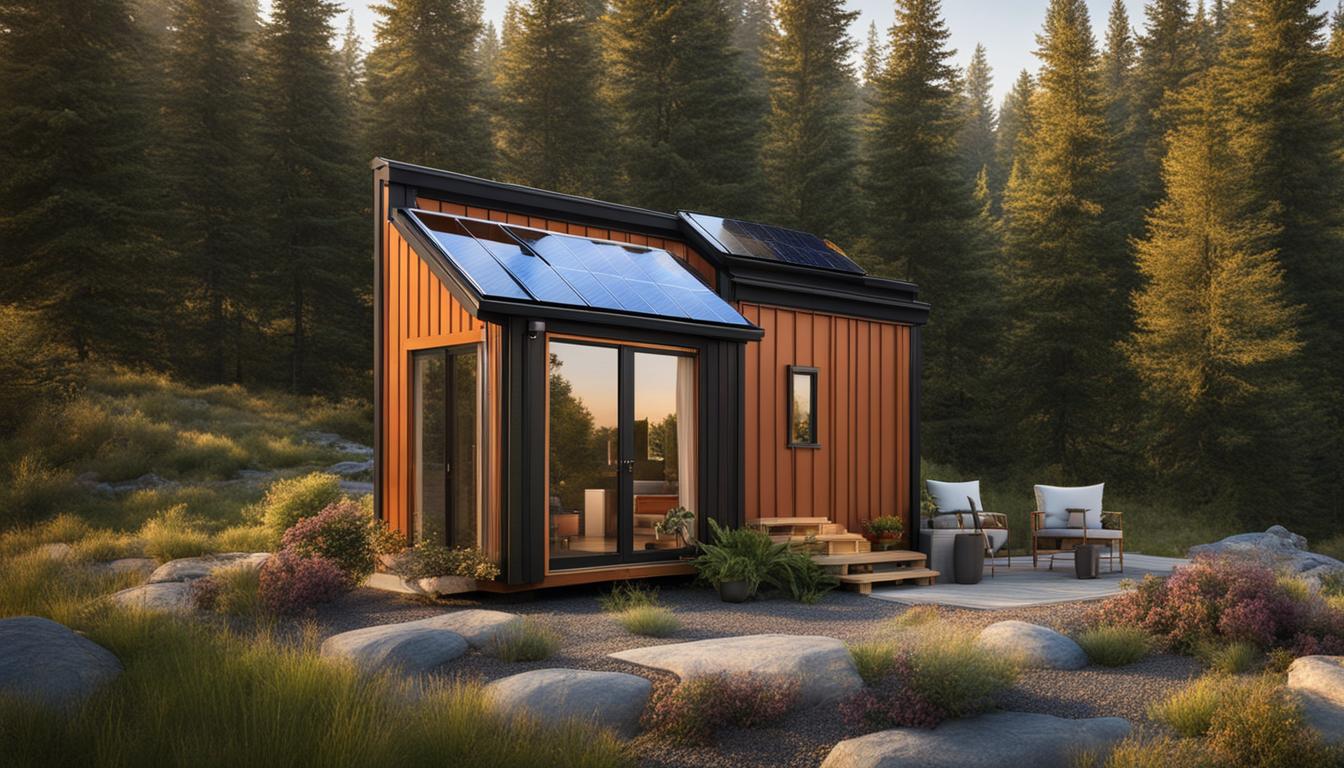
In 2023, the cost of building a tiny home can vary based on several factors. From materials and labor to size and finishes, these elements contribute to the overall price tag. Whether you’re looking for an expensive custom-built option or a more budget-friendly prefab home, understanding the cost breakdown is essential for planning your tiny home project.
Table of Contents
Key Takeaways:
-The average cost of building a tiny home in 2023 ranges from $30,000 to $70,000.
-Factors such as size, finishes, and whether the home is on wheels or a foundation can influence the price.
-Prefab tiny homes tend to be more affordable than custom-built options.
-Land loans and construction loans are common financing options for tiny home projects.
-Consider your needs, budget, and local regulations when planning to build or buy a tiny home in 2023.
Finding The Right Land
When it comes to building a permanent tiny home, finding the right land is the first step in the process. It involves thorough research and evaluation of available properties in your desired area, taking into account local zoning laws and restrictions. It is crucial to consider factors such as location, regulations, and additional costs associated with land purchase and development. The right piece of land can greatly impact the feasibility and success of your tiny home project.
Understanding Zoning Laws and Restrictions
One of the key aspects of finding the right land for your tiny home is understanding the zoning laws and building restrictions in your area. Zoning laws dictate how land can be used and what types of structures can be built on it. Some areas may have specific regulations for tiny homes, while others may not allow them at all. It is essential to thoroughly research and familiarize yourself with the zoning laws and restrictions in your desired location to ensure that you can legally build and reside in your tiny home.
Considering Location and Additional Costs
Location plays a vital role in choosing the right land for your tiny home. Factors such as access to utilities, proximity to amenities, and the overall environment should be carefully considered. Additionally, it is important to factor in any additional costs associated with land purchase and development, such as site preparation, utility connections, and permits. These costs can vary depending on the location and specific requirements of your tiny home project. By thoroughly researching and evaluating available properties, understanding local zoning laws and restrictions, and considering factors such as location and additional costs, you can increase your chances of finding the right land for your tiny home. Taking the time to find the perfect piece of land sets a strong foundation for the successful construction and enjoyment of your tiny home.
Taking Out A Land Loan
When purchasing land for a tiny home, many individuals opt to take out a land loan to finance this significant investment. A land loan is a type of financial arrangement specifically designed for buying land and can provide the necessary funds to secure the perfect location for your tiny home. However, it’s important to understand the ins and outs of land loans before proceeding with the application process.
A land loan typically requires a larger down payment compared to traditional mortgage loans. Lenders often view land loans as higher-risk loans due to the absence of a physical structure on the property. Therefore, they require a higher down payment to mitigate their risk. In general, you can expect to pay around 20-50% of the land’s purchase price as a down payment, depending on the lender’s requirements and your financial situation.
Additionally, credit score requirements for land loans can be stricter compared to other types of loans. Lenders want to ensure that borrowers have a solid credit history and sufficient financial stability to repay the loan. While specific credit score requirements vary between lenders, a higher credit score increases your chances of qualifying for a land loan and may result in more favorable terms, such as a lower interest rate.
Financing Options for Land Purchase
When considering a land loan, it’s essential to explore different financing options to find the